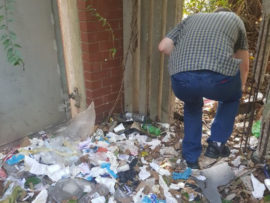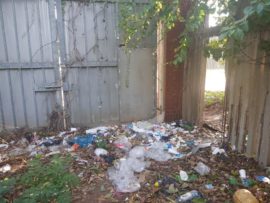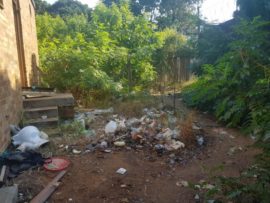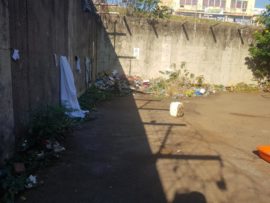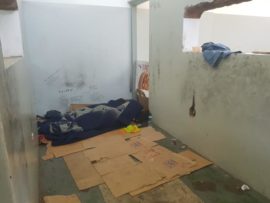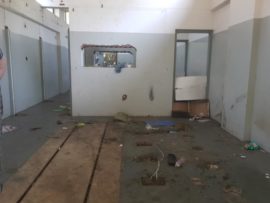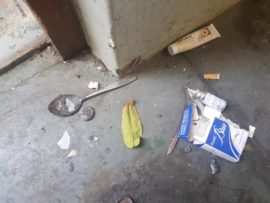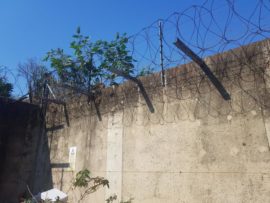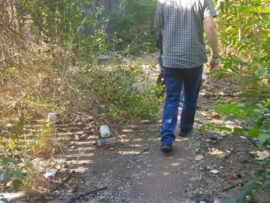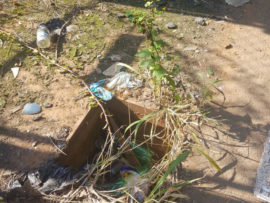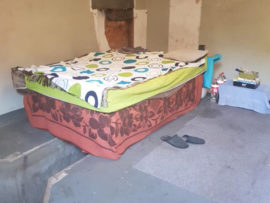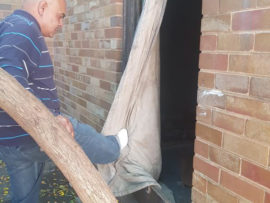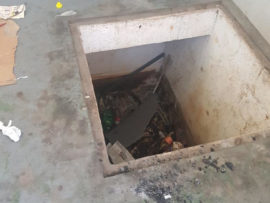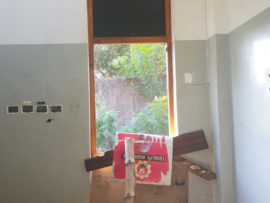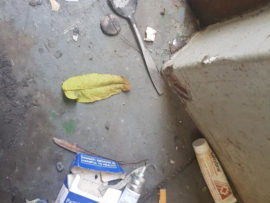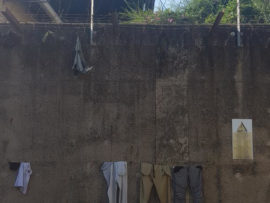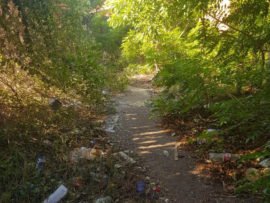Birthed from abandonment: An inside look at Amanzimtoti’s vagrant dwellings [WATCH]
Different openings lead into dark rooms where in many, faces look back out at those looking in. These belong to those inhabitants of the building who sleep throughout the day and leave at night.

MOUNDS of litter line footpaths leading to vagrant-overrun buildings and natural spaces, where huddled groups of lackluster-eyed faces look out from living areas scattered with drug paraphernalia, used condoms, make-shift bedding and clothing.
Amanzimtoti neighbourhood watch chairman, Sam Musthapa, and vice-chairman Brett Smith, escorted the SUN on Thursday, 27 June through six different neglected or abandoned places within central Amanzimtoti.

The men are looking to enlighten the community about the many vagrants lurking in privately owned properties, municipality owned buildings and stations, coastal bushes along the dunes, train stations and unmaintained bush.
These places have made for ideal living areas for those involving themselves in criminal and drug-related activities.
The spots visited are all situated within a 2km radius of the Toti Centre, the first being the litter-filled, canal-like river at the bottom of the CBD’s train station bridge stairway.
Standing out from those on the tour included a Pollock Road municipal electricity station. From the street overgrown bushes and vines show the building well-neglected and upon entering, one can see it is not longer used for its intended purpose.
Crouching below collapsed barbed wire when entering the property through a hole in the wall, first noticed are the mounds of litter lining the footpath heading around the derelict building.
See the video footage:
Different openings lead into dark rooms where in many, faces look back out at those looking in. These belong to those inhabitants of the building who sleep throughout the day and leave at night, those absent at the time of the visit return to the building for the night.
Photos of the abandoned Pollock Road municipal station:
Having problems viewing this gallery? See all the images here: Pollock Road’s derelict municipal electrical station
Equally eye-opening was the privately-owned building at 74 Beach Road, said to be an abandoned hotel. Hidden from onlookers by overgrown trees, it proves a prime spot to watch passers-by and flat residents’ movements. Tell-tale bedding and clothing show that the graffitie’d building’s many rooms, which run alongside each other, have acquired inhabitants.
Familiar litter is mounded along pathways which broadcast from the building, heading out in every direction through the overgrown bush surrounding it, proving effective ‘getaway’ routes for those wishing not to be found by authorities. These footpaths weave through the town between the mentioned places.
Having issues viewing the whole gallery? View all the images here: Beach Road’s abandoned hotel
The group swears that these places double as a hiding place when goods are stolen or crimes committed. Many of the inhabitants operate as illegal car guards along Beach Road, and use natural spaces of the town as public toilets.
The owner of the Beach Road property was contacted, but comment was not forth-coming by the time of going to print.
See video footage of the Beach Road abandoned building:
The city has no plan
When questioned about the issue, Ward 97’s councillor André Beetge explained that although not aware of each and every crevice that facilitates vagrants, he is regularly updated on the existence and location by residents, formal law enforcement and community groups.
Beetge agreed that the upkeeping of buildings and natural spaces in the area would make it less ‘easy’ for vagrants to inhabit them.
“I recently attended an International Police Association (IPA) meeting in Cape Town where this was one of the points under discussion. Not necessarily cutting down all our natural heritage thus rendering us in a desert, but indeed residents trimming, cutting back and maintaining an ‘open and clear area’ will already have positive impacts. Likewise, maintaining buildings (whether private or state owned) or to apply for demolishing of a dwelling if it is beyond the point of economical repair,” he said.
See the dwelling two couples have created near to the Toti CBD taxi rank:
When queried on what plans the municipality has in place to see these illegal residents removed from their set-ups, Beetge explained that there is a distinct difference between plan and implementation.
“The city has now established ‘Area Based Management’ units that comprise various departments, which then prioritise and address various problems in line with budget constraints,” he said.
“In reality the city, however, has no plan to address the thousands of vagrants and homeless that inhabit pipes, corners and every possible crevice for shelter. Durban City even finds itself under siege as can be confirmed by anyone travelling into the city off the N4, or who passes through Warrick triangle or the beachfront.

Courts are reluctant to prosecute people for essentially being poor and homeless, let alone prisons being too overcrowded to accommodate them.”
When queried about steps currently being taken to remove these illegal inhabitants from their places of residence, or to make their comfortable set-up a little less comfortable, Beetge said, “The same was a point of discussion at recent sector police meetings where the meeting concluded that it will start prioritising local concerns to be addressed in conjunction with SAPS and other role players.
It was further noted that the private security industry was still very poorly supported, yet the reality being that there has never (and neither will there ever be) sufficient police officers to attend the needs of all citizens,” he said.
“We urge residents to become members of the private security industry and to get involved in the neighbourhood watches, community police forums and other service groups who have common goals of cleaning the town and coming up with implementable solutions which could see the vagrants (and they will increase as winter settles across the interior of the country) rather move along.
Beetge reminded that Sector 1 (Athlone Park to Seadoone Road) is hosted at SAPS Amanzimtoti from 6pm on the first Tuesday of the month, and Sector 2 (Seadoone Road to Illovo Beach) meets at 6pm on the first Wednesday of the month in the Warner Beach Senior Primary School hall.
DID YOU KNOW?
Click on the words highlighted in red to read more on this and related topics.
To receive news links via WhatsApp, send an invite to 061 694 6047
The South Coast Sun is also on Facebook, Twitter, Instagram and Pinterest – why not join us there?
Do you have more information pertaining to this story?
Feel free to let us know by commenting on our Facebook page or you can contact our newsroom on 031 903 2341 and speak to a journalist.
(Comments posted on this issue may be used for publication in the Sun)



